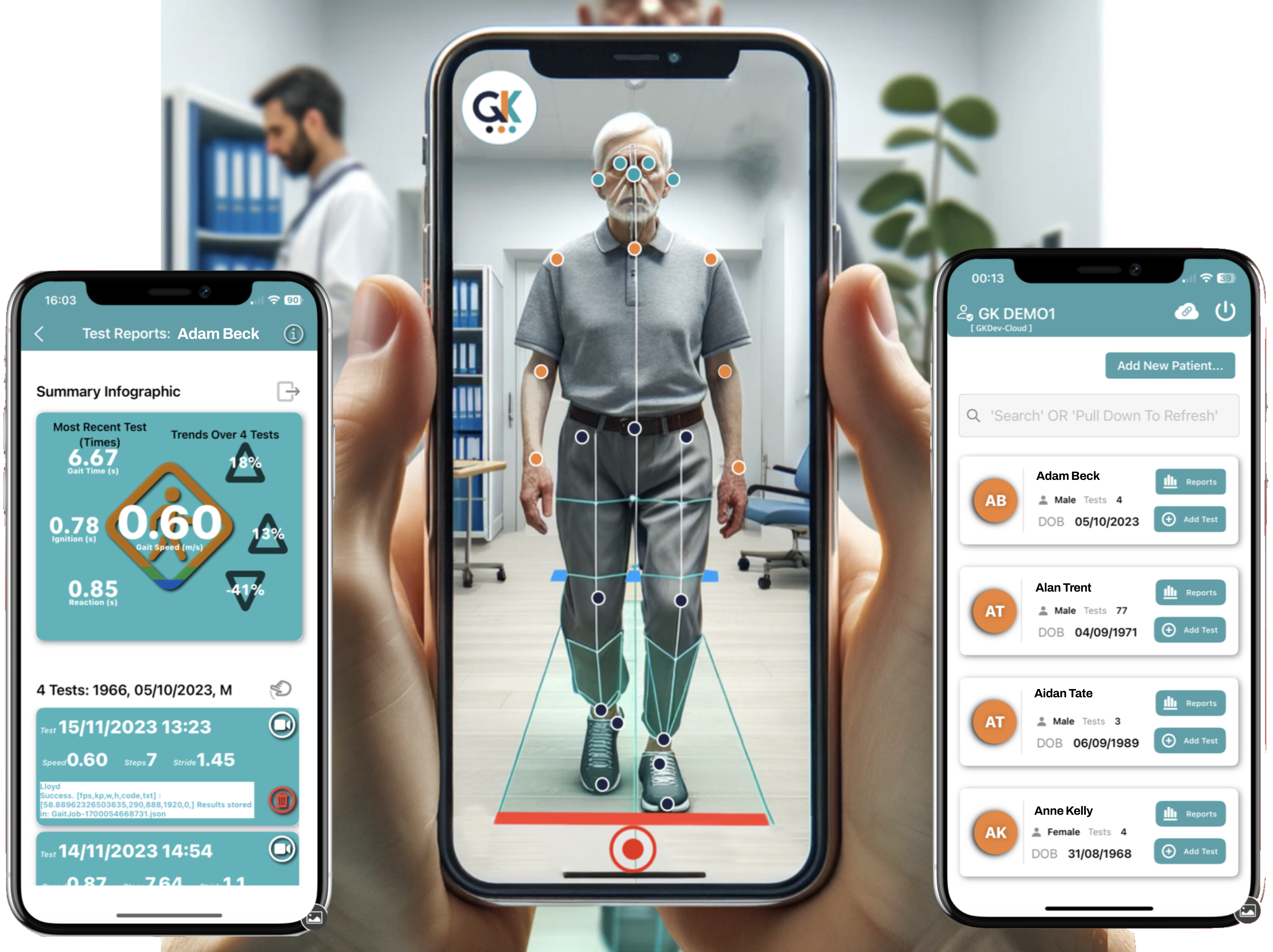Tallaght University Hospital (TUH) has initiated a new project using the Irish-developed GaitKeeper software to prevent serious injury and hospitalisation as a result of falls in older people.
GaitKeeper is also being studied by TUH to investigate diagnosis of early Alzheimer’s disease and to measure disease progression in people with Parkinson’s disease, multiple sclerosis and arthritis.
GaitKeeper uses novel AI computer vision algorithms to analyse a person’s walk via a video recorded on a mobile phone. The patented augmented reality app guides clinicians through a streamlined process for recording and reviewing assessments.
The app was developed by Dublin City University spin-out Digital Gait Labs and Tallaght Hospital and is now a CE marked, class one medical device available on license.
Assessment videos can be recorded in any setting and there is no need for mats, sensors or wearables. Reports are stored on a secure cloud-based system, and no video data is stored on the mobile devices.
A web portal is provided that allows longitudinal reports to be viewed, exported or printed. For a typical assessment, results are available to view within three minutes.
Patient details can be entered using the app or can be bulked loaded by the system administrator. For every patient, a unique identifier can be allocated by the system or existing identifiers can be used. For every assessment carried out, a unique identifier is automatically allocated by the system.
Studies have demonstrated that slower walking speeds in older adults are predictive of adverse outcomes like falls, hospitalisation, and even death. A recent study published in the Journal of the American Medical Association (JAMA) found that individuals with the highest gait speed had a much lower risk of falls compared to those with the lowest gait speeds.
The GaitKeeper app collects longitudinal data on walking speed, support base, swing, flexion, and symmetry measures to estimate the risk of falls. GaitKeeper captures movement at over 20 points on the body 60 times every second, allowing detection of gait events within 1/60 of a second.
The standardised measurements can then be used to assess frailty, general health status, response to rehabilitation, cognitive decline, falls and hospitalisation risk.
Regular monitoring of walking speed can guide the application of preventative measures and interventions, with benefits for the patient and the health system.
TUH has already begun recruiting patients to the new falls prevention project and expects to have initial data available before the end of the year.
The initiative is being spearheaded by Paul McElwaine, director of the falls unit at TUH. He said the app is a “breakthrough” in falls prevention.
“International guidelines have always recommended the importance of gait speed as an important indicator of someone’s risk of falling, but for lots of reasons this has been significantly challenging to implement in clinical settings,” Dr McElwaine said.
“GaitKeeper addresses all these issues and is a real breakthrough in allowing for easy and accurate measurement of gait speed in falls clinic and acute care settings, so that we can focus resources to those most in need to prevent future falls.”



